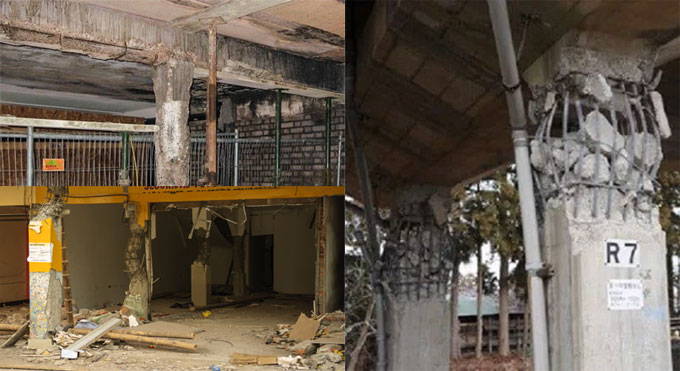
Types of design faults for concrete deterioration
Due to several design faults, the concrete gets damaged and the strength of the structural member is minimized significantly. Common design faults in concrete buildings range from insufficient structural design, insufficient cover, inappropriate joint detailing, wrong placement of embedments in concrete, and inappropriate connection details. To protect the concrete against damage in future, the designers should be well versed with these design faults.
1. Insufficient Structural Design: Insufficient structural design allows structural members to support loads which remain well above the design loads. The causes of insufficient structural design are cracking of concrete caused by torsion and shear stress and spalling of concrete caused by high compression stress. To indicate insufficient design due to damage, it is necessary to compare the position of the damage along with the types of stresses which should exist in the concrete.
2. Insufficient Concrete Cover: When insufficient cover to reinforcement is arranged in the construction drawing based on the environmental exposure recommended by the standard codes, steel reinforcement would be affected with corrosion because of penetrability of moisture into the concrete. It is also responsible for freeze-thaw degradation of concrete.
3. Improper arrangement of embedments in Concrete: This type of error is mostly found in the detailing of concrete. Arrangement of embedment in exact position is necessary to get rid of damage to concrete.
Embedded metals, electrical conduits or outlet boxes should not be located adjacent to the exterior surfaces of the concrete structure. Cracks form over and around the embedment which result in damaging concrete owning to corrosion and freeze thaw effect.
4. Detailing of joints: Detailing of joints in drawings for concrete structure is considerably vital. Joints facilitate the concrete to spread out and contract according to variation of temperature. It also facilitates the concrete to transmit loads through joints. Detailing of contraction joints, expansion joints, and construction joints for concrete structure is required to avoid any kind of probable damage.
Details of reinforcement, types of applicable materials, proper placement of joining materials should be mentioned in detail to avoid any error that may happen at site throughout construction.
5. Imperfect connection details: Imperfect connection details among concrete members like beams, columns, and slabs can cause damage to concrete structure. When the detailing of connecting members at the junction is improper, the load transmitted from one member to the other may not be as expected from the design. Consequently, concrete member may deflect or experience stability issues throughout the occupancy of the structure which may make the structure unsuitable for use.
6. Reinforcement Detailing: Various reinforcement detailing errors like development length of bars, and lapping methods of reinforcement for the given size may also create problems to the concrete structure. The contractor should have clear ideas about these things, then the reinforcement can?t be arranged properly in concrete which may damage the structure during its service.
7. General and Special Notes: There should be general and special notes on drawing for whatever is presumed throughout the design. If any assumption is taken in case of unavailability of any details, then that should be clearly indicated in the drawing to facilitate the contractor or supervisor can evaluate the assumptions made at site at the time of construction and for any modifications, structure should be redesigned and detailed.


